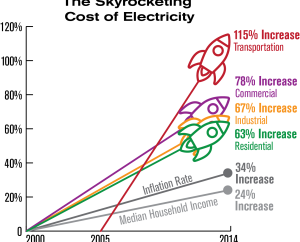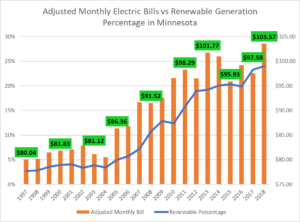There are three significant sorts of power supplies: unregulated, straight regulated, and exchanging. The fourth sort of power supply circuit called the wave regulated, is a half-breed between the “animal power” and “exchanging” plans, and merits a subsection to itself.
Unregulated
An unregulated power supply is comprised of a transformer, rectifier, and low-pass channel. These Power to Choose supplies ordinarily display a ton of wave voltage and other AC commotion superimposed on the DC power. Assuming that the information voltage changes, the resulting voltage will fluctuate by a corresponding sum. The upside of an unregulated inventory is that it’s modest, basic, and proficient.
Direct regulated
A direct regulated supply is essentially a savage power supply followed by a semiconductor circuit working in its dynamic, or “straight mode, subsequently the name direct controller. A common direct controller is intended to yield a proper voltage for a wide scope of information voltages, and it essentially drops any abundance input voltage to permit a most extreme result voltage to the heap. This abundance voltage drop brings about huge power dissemination as intensity. Assuming the information voltage gets too low, the semiconductor circuit will lose guidelines, implying that it will neglect to keep the voltage consistent. It can drop abundance voltage, not compensate for a lack in voltage from the animal power segment of the circuit. In this manner, you need to keep the info voltage no less than 1 to 3 volts higher than the ideal result, contingent upon the controller type. This implies what might be compared to no less than 1 to 3 volts increased by the full burden current will be disseminated by the controller circuit, creating a great deal of intensity. This makes straight-regulated power supplies rather wasteful. Likewise, to dispose of all that heat they need to utilize enormous intensity sinks which make them huge, weighty, and costly.
Exchanging

An exchanging regulated power supply is a work to understand the upsides of both beast force and straight regulated plans. The drawback of switchers is that they are more complicated, and because of their activity they will generally create a great deal of high-recurrence AC commotion on the power line. Most switchers additionally have huge wave voltage on their results. With the less expensive sorts, this commotion and wave can be as terrible concerning unregulated power supply; such low-end switchers aren’t useless, because they give a steady typical result voltage, and there’s the all-inclusive input ability. Costly switchers are without swell and have commotion close to as low concerning around a straight sort; these switchers will generally be essentially as costly as direct supplies. The motivation to utilize a costly switcher rather than a decent direct is if you want widespread power framework similarity or high productivity. High productivity, lightweight, and little size are the reasons exchanging power supplies are all around utilized for powering computerized PC circuitry.
Swell regulated
A wave regulated power supply is an option in contrast to the directly regulated plan plot: an animal power supply comprises the front end of the circuit, yet a semiconductor worked stringently in its on/off modes moves DC power to an enormous capacitor depending on the situation to keep up with the resulting voltage between a high and a low setpoint. As in switchers, the semiconductor in a wave controller never passes current while in its dynamic, or straight, a mode for any significant period, implying that tiny energy will be squandered as intensity. In any case, the greatest downside to this administrative plan is the important presence of some wave voltage on the result, as the DC voltage shifts between the two voltage control setpoints. Additionally, this wave voltage shifts in recurrence relying upon load current, which makes the last separating of the DC power more troublesome. Swell controller circuits will generally be significantly less difficult than switcher circuitry, and they need not handle the powerful line voltages that switcher semiconductors should deal with, making them more secure to chip away at.
